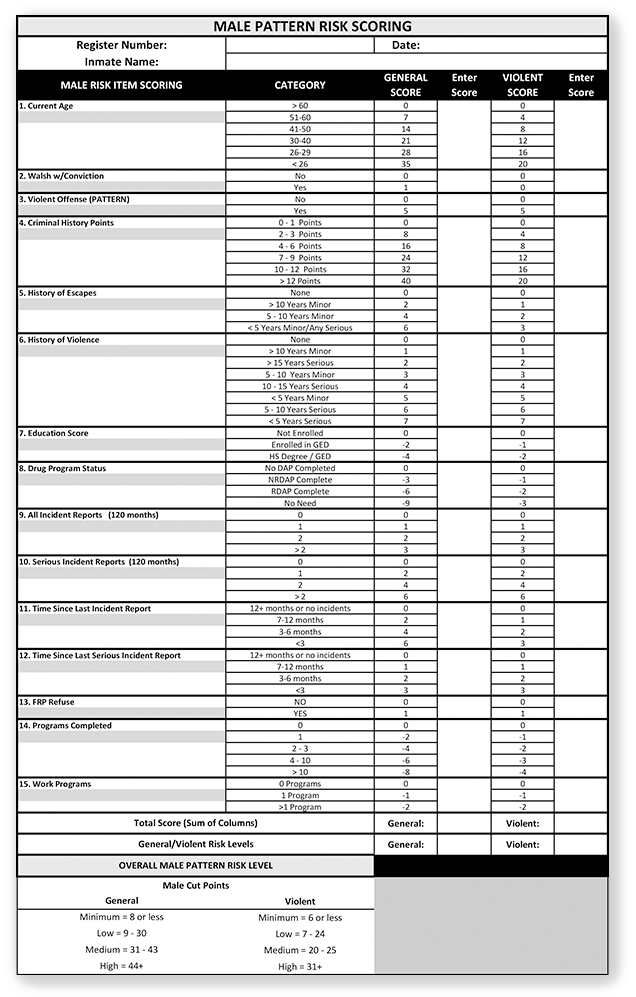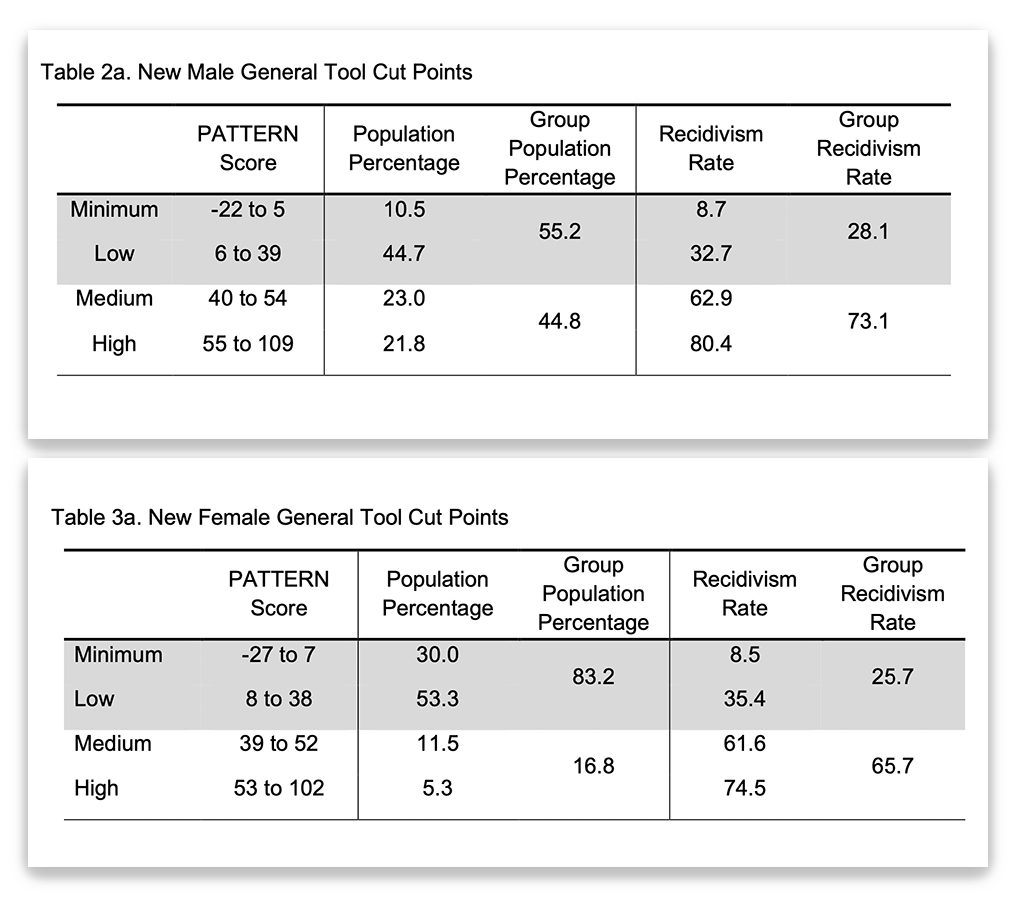We post news and comment on federal criminal justice issues, focused primarily on trial and post-conviction matters, legislative initiatives, and sentencing issues.

PATTERN CHANGES MAKE MANY MORE ELIGIBLE FOR CREDITS
In April, the Dept of Justice told Congress that it would roll out a new version of the PATTERN recidivism risk measurement system in May, one that contained adjustments it said would improve accuracy and possibly benefit up to 33,000 federal prisoners.
Nothing has been publicly announced since, although a lot of inmates have reported that their categories were changing while their PATTERN point scores were not. A hard-to-find report by the Attorney General I obtained last week confirmed that while no scoring categories have changed in the revised PATTERN system – known as PATTERN 1.3 – the cut points did.
 Cut points are crucial, being the level at which an inmate’s recidivism rating changes from “minimum” to “low,” from “low” to “medium,” and from “medium” to “high.” Because the First Step Act generally does not let anyone with a “medium” or higher risk level cash in earned time credits (ETCs), a prisoner’s level can make a difference of up to a year on sentence length, and enhanced home confinement or halfway house.
Cut points are crucial, being the level at which an inmate’s recidivism rating changes from “minimum” to “low,” from “low” to “medium,” and from “medium” to “high.” Because the First Step Act generally does not let anyone with a “medium” or higher risk level cash in earned time credits (ETCs), a prisoner’s level can make a difference of up to a year on sentence length, and enhanced home confinement or halfway house.
It is now harder for a male to be a PATTERN “minimum” – the former cut point of “8 or less” fell to a new cut point of “5 or less” – although the female “minimum” cut point rose from “5 or less” to “7 or less.” But the big change is from “low” to “medium.”
The former male cut point between “low” and “medium” rose from 30 to 39. The women’s “low to medium” cut point jumped from 31 to 38. The former “medium to high” cut point went from 44 to 55 for males and 31 to 53 for females.
Under the old PATTERN, 40% of males were “minimum” or “low.” Under PATTERN 1.3, that number jumped to 68%. Female “minimums” and “lows” increased from 78% to 86%. The PATTERN 1.3 changes made 33,070 more inmates eligible to use their ETCs.
 PATTERN is still criticized by some commentators for being insufficiently dynamic, meaning that too much of what goes into scores – like age and criminal history – cannot be changed despite a prisoner’s best efforts. The DOJ report asserted that “PATTERN 1.3 displays dynamic validity… Across the four gender/recidivism tools examined, approximately 25 to 35% of individuals had a lower [risk] designation during their last assessment compared to their first, and between 3 and 5% had a higher risk designation.” The DOJ position suggests that category changes in future PATTERN amendments are unlikely.
PATTERN is still criticized by some commentators for being insufficiently dynamic, meaning that too much of what goes into scores – like age and criminal history – cannot be changed despite a prisoner’s best efforts. The DOJ report asserted that “PATTERN 1.3 displays dynamic validity… Across the four gender/recidivism tools examined, approximately 25 to 35% of individuals had a lower [risk] designation during their last assessment compared to their first, and between 3 and 5% had a higher risk designation.” The DOJ position suggests that category changes in future PATTERN amendments are unlikely.
PATTERN 1.3 is a welcome change, but real problems with the First Step Act earned time credits remain. Writing in Forbes last week, Walter Pavlo reported that “according to insiders at the BOP, prisoners and former executive staff with connections to the current state of the BOP as it relates to the FSA, there is ‘mass confusion at every institution,”’ and that the Designation and Sentence Computation Center, the entity ultimately responsible for calculating sentence duration, is backed up and the programming is not in place for FSA. The result is that thousands of prisoners are incarcerated beyond their legal release date.”
 Pavlo wrote that “BOP staff who have no official program statement to work from are spreading misinformation to prisoners. Many prisoners are being told that they do not qualify for FSA credits for a variety of reasons, [and] many those reasons are just not true. As a result, prisoners are not only confused but have no place to go to get clarification. Now, some are going to Court.”
Pavlo wrote that “BOP staff who have no official program statement to work from are spreading misinformation to prisoners. Many prisoners are being told that they do not qualify for FSA credits for a variety of reasons, [and] many those reasons are just not true. As a result, prisoners are not only confused but have no place to go to get clarification. Now, some are going to Court.”
DOJ, First Step Act Annual Report – April 2022
Forbes, First Step Act Inaction Keeps Federal Inmates In Prison (May 30, 2022)
– Thomas L. Root

